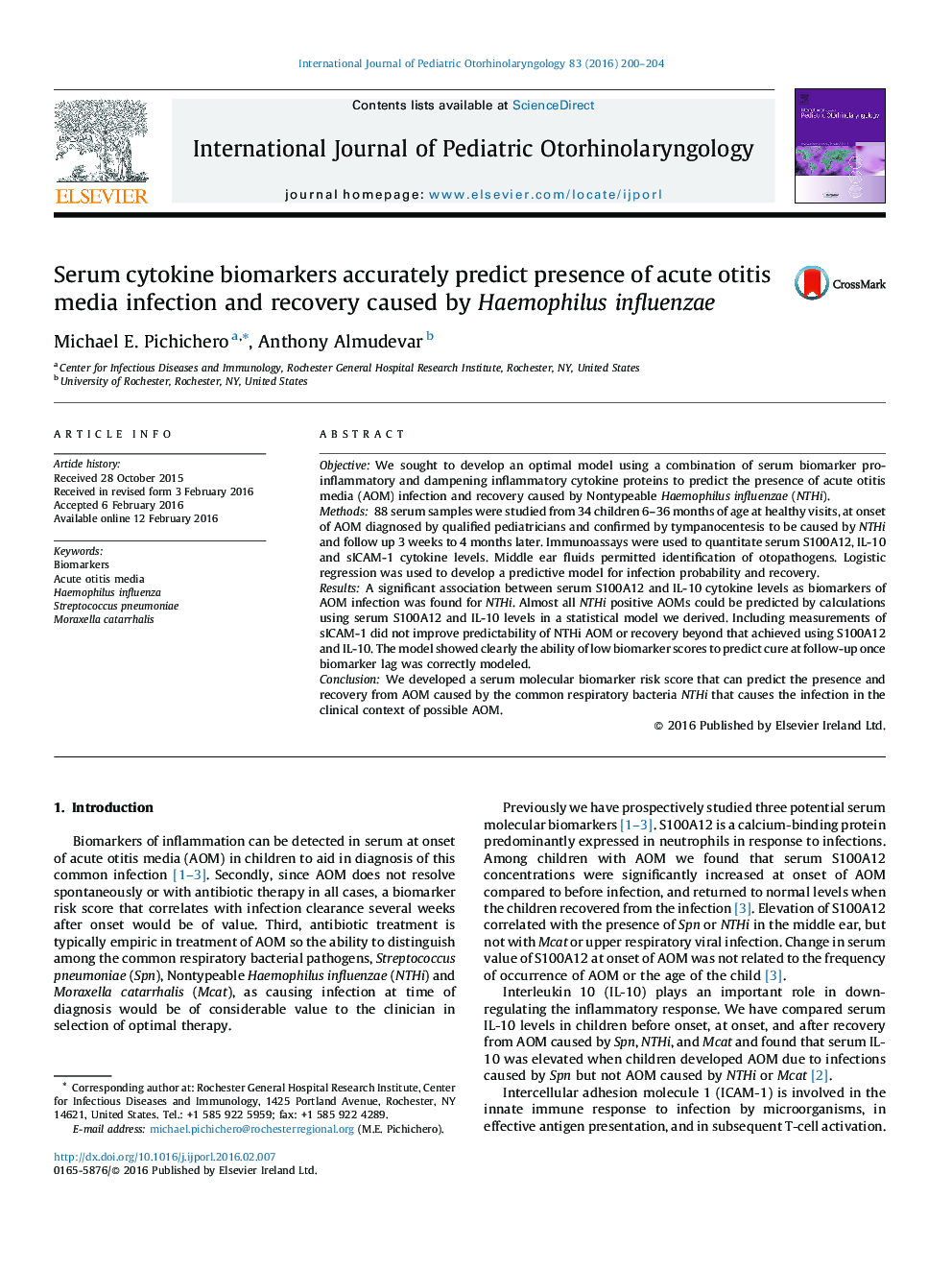| Article ID | Journal | Published Year | Pages | File Type |
|---|---|---|---|---|
| 6213313 | International Journal of Pediatric Otorhinolaryngology | 2016 | 5 Pages |
ObjectiveWe sought to develop an optimal model using a combination of serum biomarker pro-inflammatory and dampening inflammatory cytokine proteins to predict the presence of acute otitis media (AOM) infection and recovery caused by Nontypeable Haemophilus influenzae (NTHi).Methods88 serum samples were studied from 34 children 6-36 months of age at healthy visits, at onset of AOM diagnosed by qualified pediatricians and confirmed by tympanocentesis to be caused by NTHi and follow up 3 weeks to 4 months later. Immunoassays were used to quantitate serum S100A12, IL-10 and sICAM-1 cytokine levels. Middle ear fluids permitted identification of otopathogens. Logistic regression was used to develop a predictive model for infection probability and recovery.ResultsA significant association between serum S100A12 and IL-10 cytokine levels as biomarkers of AOM infection was found for NTHi. Almost all NTHi positive AOMs could be predicted by calculations using serum S100A12 and IL-10 levels in a statistical model we derived. Including measurements of sICAM-1 did not improve predictability of NTHi AOM or recovery beyond that achieved using S100A12 and IL-10. The model showed clearly the ability of low biomarker scores to predict cure at follow-up once biomarker lag was correctly modeled.ConclusionWe developed a serum molecular biomarker risk score that can predict the presence and recovery from AOM caused by the common respiratory bacteria NTHi that causes the infection in the clinical context of possible AOM.
